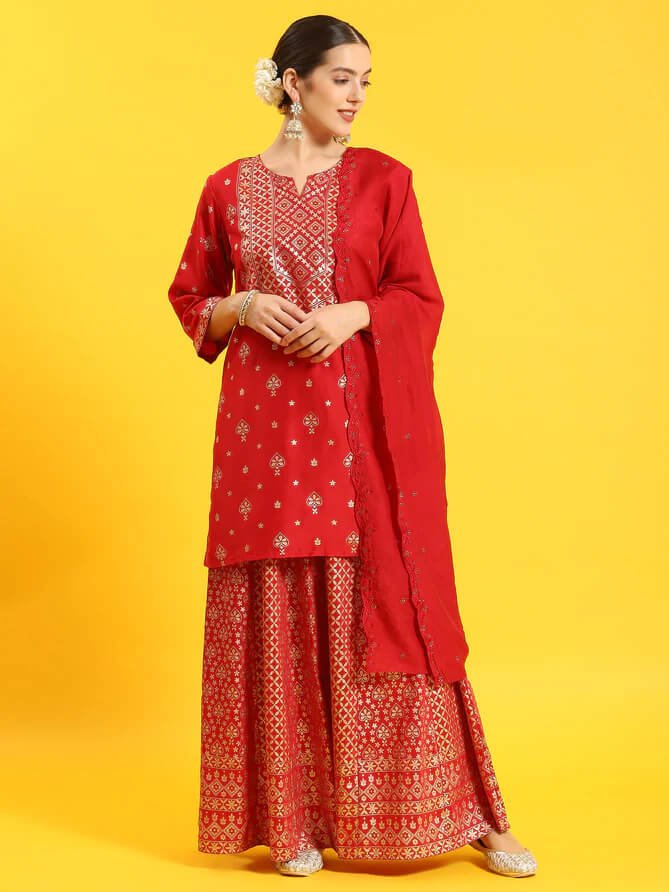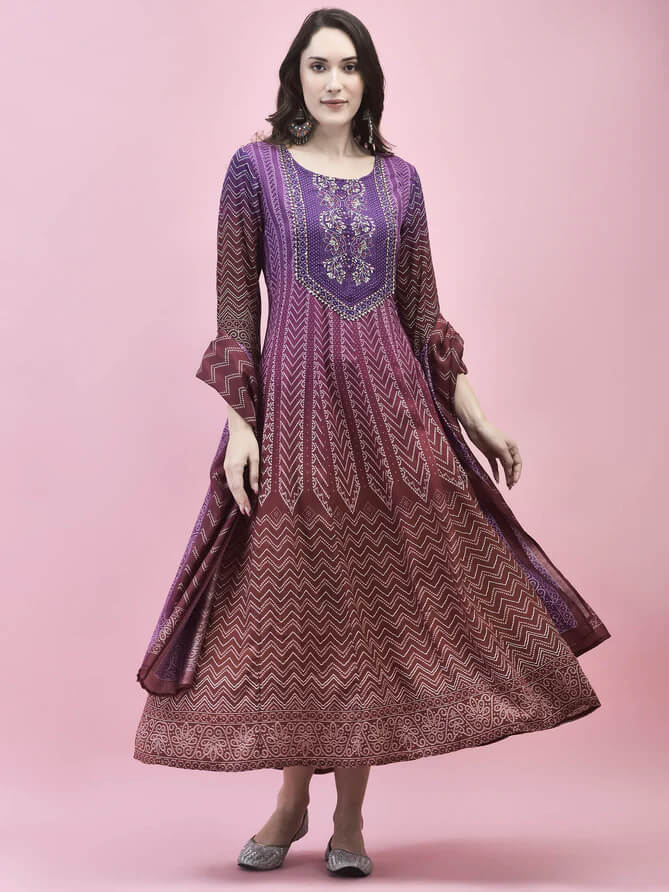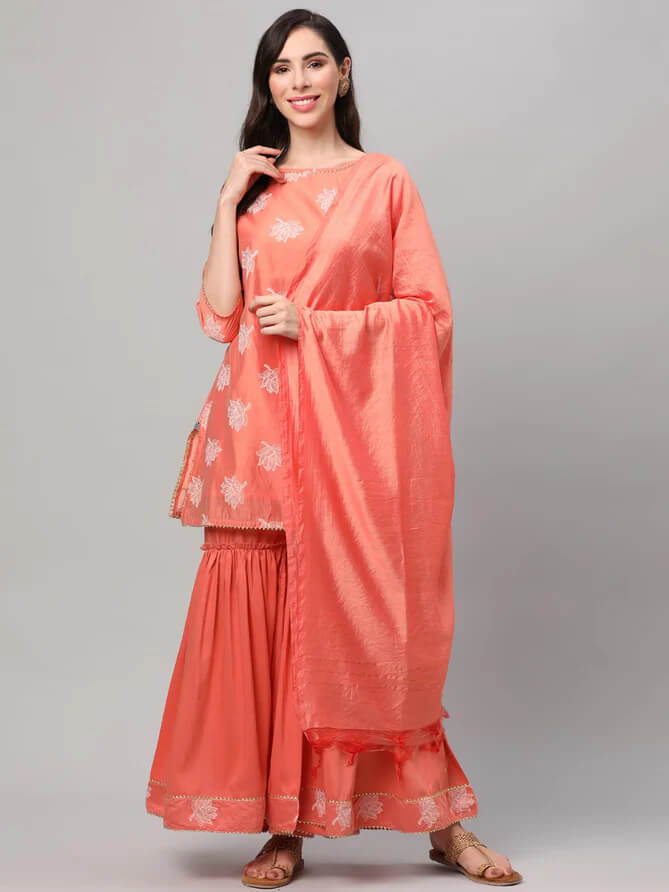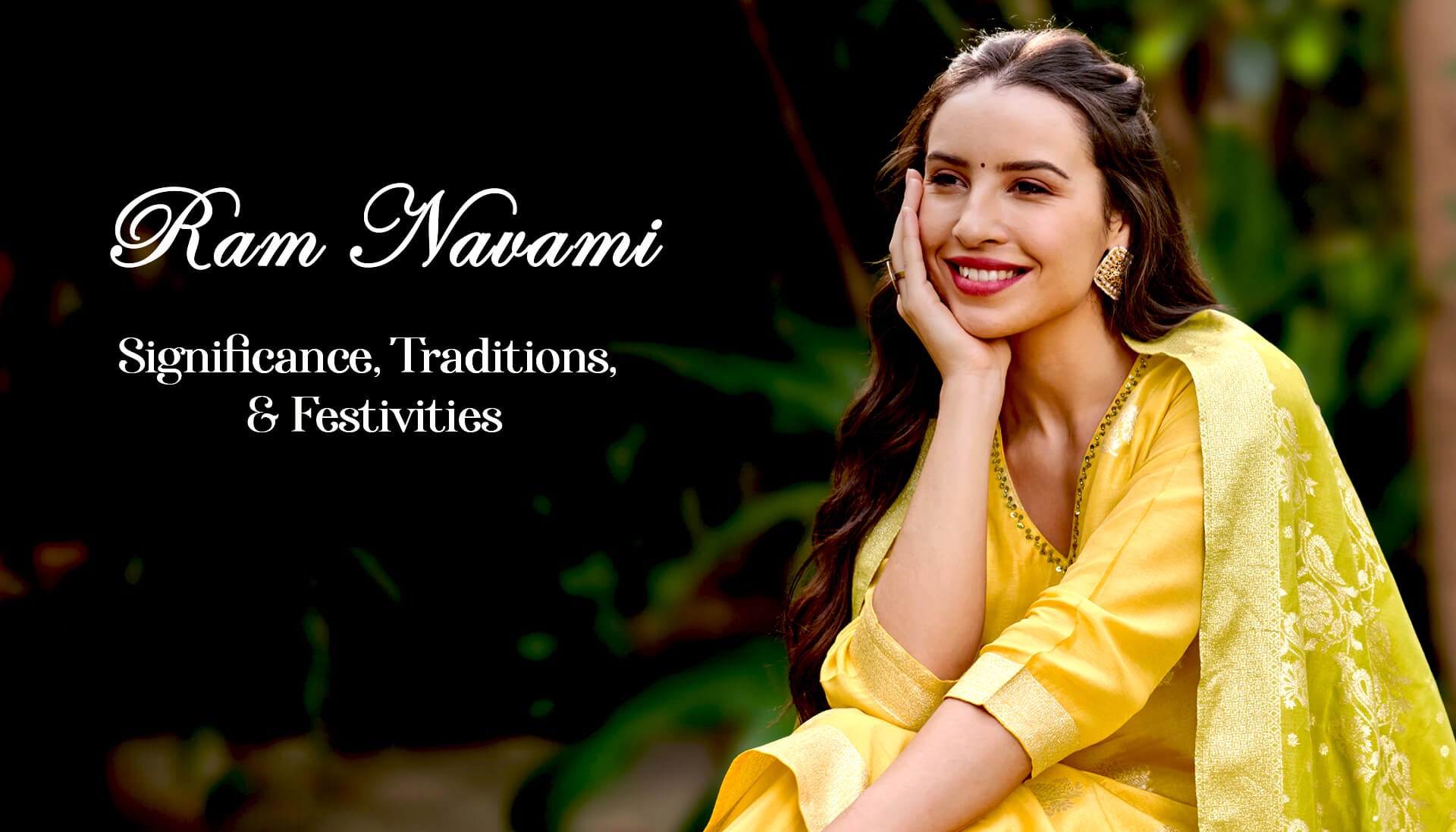Tradition And Style On Baisakhi 2024 Festivities
As the vibrant hues of spring paint, the world, Baisakhi, also known as Vaisakhi, approaches with its promise of renewal and celebration. Baisakhi 2024 beckons us to immerse ourselves in the rich tapestry of traditions, significance, and fashion inspirations associated with this joyous occasion. Join me as we delve into the colourful festivities of Baisakhi and explore the timeless elegance of traditional attire for women.

Understanding the Significance:
Baisakhi, steeped in history and tradition, holds immense cultural and religious significance, especially for the Sikh community. It commemorates the formation of the Khalsa Panth by Guru Gobind Singh Ji in 1699 and marks the beginning of the Sikh New Year. The festival falls on April 13th or 14th each year, coinciding with the harvest season in the Indian subcontinent.

In Punjab, where Baisakhi is celebrated with unparalleled zeal, the festival heralds the onset of the harvest season and serves as an occasion for farmers to express gratitude for the bountiful crops. The day begins with prayers at gurdwaras, followed by processions, lively Bhangra and Giddha performances, and communal feasting. Nagar Kirtan, a grand procession led by the Panj Pyare (Five Beloved Ones), is a hallmark of Baisakhi celebrations, symbolizing unity and devotion.
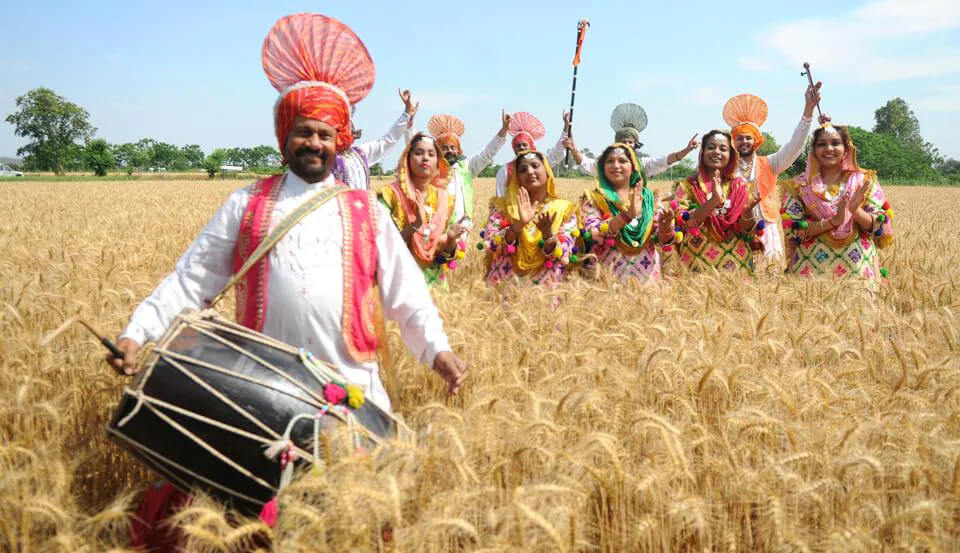
While Punjab resonates with the vibrant energy of Baisakhi, other regions across India, including Haryana, Uttar Pradesh, and Himachal Pradesh, embrace the festival with their own unique rituals and customs. From offering prayers at temples to organizing fairs and cultural events, Baisakhi unites people from diverse backgrounds in a spirit of camaraderie and celebration.
Embracing Tradition Through Fashion:
Baisakhi is not just a religious festival; it's also an opportunity to showcase the rich tapestry of Indian culture through fashion. For women, selecting the perfect Baisakhi outfit is an art that combines tradition, elegance, and style. Let's explore some trendy outfit ideas that capture the essence of Baisakhi:
- Patiala Suit: The quintessential Punjabi attire, a Patiala suit exudes grace and charm. Opt for vibrant colors like bright pink, royal blue, or sunny yellow, adorned with intricate embroidery or phulkari work. Pair it with a matching dupatta and accessorize with statement jewellery for a touch of glamour.
- Lehenga Choli: Make a statement in a resplendent lehenga choli ensemble, featuring exquisite craftsmanship and dazzling embellishments. Choose fabrics like silk or chiffon in bold hues and complement them with gold or silver accents. Complete your look with a traditional choker necklace, jhumkas, and a sleek bun adorned with fresh flowers.
- Anarkali Suit: Embrace the timeless elegance of an Anarkali suit, characterized by its flowing silhouette and regal charm. Opt for pastel shades like peach, mint green, or lavender, embellished with intricate thread work or mirror embroidery. Add a touch of drama with a contrasting dupatta draped gracefully over one shoulder.
- Sharara Set: For a contemporary twist on traditional attire, consider a stylish sharara set featuring a short kurta and flared trousers. Choose vibrant prints or geometric patterns in contrasting colors to make a bold fashion statement. Complete your ensemble with a pair of juttis and a potli bag for a touch of ethnic chic.
- Saree: Embody grace and sophistication in a classic saree ensemble, adorned with exquisite detailing and timeless elegance. Opt for lightweight fabrics like georgette or chiffon in vibrant hues such as coral, turquoise, or emerald green. Experiment with different draping styles, from the classic Nivi drape to the modern butterfly style and accessorize with traditional jewellery for a touch of opulence.
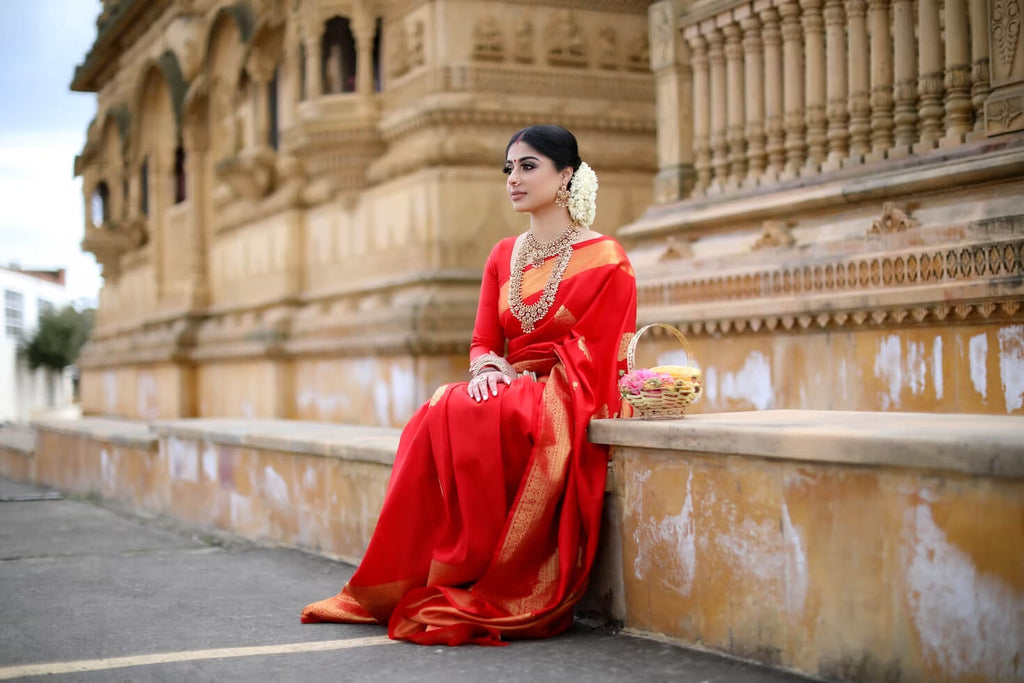
Exploring Baisakhi Beyond Borders:
While Baisakhi holds special significance in India, its festivities extend far beyond the country's borders. Sikh communities around the world come together to celebrate this auspicious occasion with great fervour and enthusiasm. From Canada to the United Kingdom, the United States to Australia, Baisakhi serves as a reminder of shared heritage and cultural pride.

In countries with significant Sikh populations, such as Canada, where Baisakhi is celebrated with grand parades and cultural performances, the festival serves as a platform for community engagement and solidarity. The streets come alive with colourful floats, traditional music, and the aroma of mouth-watering Punjabi delicacies, creating a vibrant tapestry of sights and sounds.
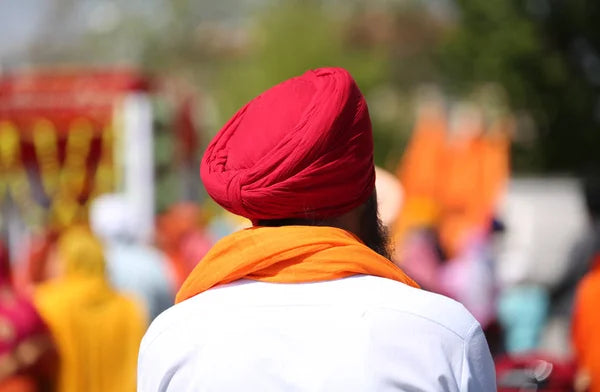
Similarly, in the United Kingdom, home to one of the largest Sikh communities outside of India, Baisakhi is celebrated with pomp and splendour. Processions, known as Nagar Kirtans, wind their way through the streets of cities like London, Birmingham, and Glasgow, drawing thousands of participants and spectators from diverse backgrounds.
In the United States, where Sikh immigrants have made significant contributions to society, Baisakhi is celebrated with traditional fervour and modern flair. From vibrant cultural performances to community service initiatives, Baisakhi festivities reflect the spirit of seva (selfless service) and inclusivity championed by Sikhism.
Fashion Trends and Inspirations:
As Baisakhi approaches, fashion enthusiasts eagerly anticipate the opportunity to showcase their sartorial flair with traditional attire. While traditional outfits like Patiala suits and lehenga cholis remain perennial favourites, contemporary fashion trends offer a plethora of options to suit every taste and style.
For those seeking a fusion of tradition and modernity, Indo-western ensembles like dhoti pants paired with crop tops or long jackets are a popular choice. These versatile outfits allow for effortless movement while exuding elegance and sophistication.

Another emerging trend in Baisakhi fashion is sustainable and eco-friendly attire. With growing awareness about environmental conservation, many fashion designers are incorporating organic fabrics, natural dyes, and traditional weaving techniques into their collections. From handloom sarees to khadi kurtas, sustainable fashion offers a unique blend of style and sustainability.
Accessories play a crucial role in elevating Baisakhi attire, adding the perfect finishing touch to your ensemble. Statement jewellery, such as chandbali earrings, jhumkas, and kundan necklaces, accentuate the beauty of traditional outfits and lend a touch of opulence to your look.
As Baisakhi 2024 draws near, let us embrace the spirit of renewal, unity, and joy that defines this auspicious occasion. Whether you're celebrating in Punjab or elsewhere, let your attire reflect the vibrant colours and rich traditions of Indian culture. From traditional Patiala suits to contemporary sharara sets, there's no shortage of fashion inspiration to elevate your Baisakhi look. So, adorn yourself in your finest attire, gather with loved ones, and revel in the festivities of Baisakhi with joy and gratitude.
FAQs
- What is Baisakhi and why is it celebrated?
Baisakhi, also known as Vaisakhi, is a festival celebrated primarily in Punjab and by the Sikh community worldwide. It marks the Sikh New Year and commemorates the formation of Khalsa Panth by Guru Gobind Singh Ji in 1699. It also signifies the start of harvest season.
- When is Baisakhi celebrated?
Baisakhi falls on April 13th or 14th every year, depending on the Indian calendar. It coincides with the harvesting of Rabi crops in the Indian subcontinent.
- What are the main rituals and customs associated with Baisakhi?
Baisakhi is marked by prayers at gurdwaras, processions, Nagar Kirtan (religious processions), community feasting, and cultural performances such as Bhangra and Giddha. Devotees take a dip in sacred rivers to cleanse their souls.
- How is Baisakhi celebrated in Punjab?
In Punjab, Baisakhi is celebrated with great enthusiasm. People visit gurdwaras, participate in Nagar Kirtan, enjoy lively Bhangra and Giddha performances, and indulge in traditional Punjabi delicacies.
- What is the significance of Baisakhi in Sikhism?
Baisakhi holds immense significance in Sikhism as it marks the establishment of the Khalsa Panth, a community of initiated Sikhs, by Guru Gobind Singh Ji. It symbolizes courage, sacrifice, and the spirit of selfless service.
- How is Baisakhi celebrated outside of India?
Sikh communities around the world celebrate Baisakhi with grand parades, cultural performances, and communal feasting. Countries with significant Sikh populations, such as Canada, the United Kingdom, and the United States, host elaborate Baisakhi festivities.
- What are some traditional outfits worn during Baisakhi?
Traditional Baisakhi attire for women includes Patiala suits, lehenga cholis, Anarkali suits, sharara sets, and sarees. These outfits are often adorned with vibrant colors, intricate embroidery, and traditional motifs.
- How can I incorporate sustainable fashion into my Baisakhi attire?
You can opt for outfits made from organic fabrics like cotton, silk, or khadi. Look for garments that are handcrafted using traditional weaving techniques and natural dyes. Supporting local artisans and ethical fashion brands is also a great way to promote sustainability.
- What are some trendy accessories for Baisakhi?
Statement jewelry such as chandbali earrings, jhumkas, kundan necklaces, and maang tikas can add a touch of glamour to your Baisakhi ensemble. Embellished clutches, potli bags, and embroidered juttis are also popular accessories.
- Are there any special sweets or dishes prepared for Baisakhi?
Yes, Baisakhi is celebrated with a variety of traditional sweets and dishes. Some popular delicacies include Punjabi chole, dal makhani, paneer tikka, makki di roti with sarson da saag, and jalebi.
- Can non-Sikhs participate in Baisakhi celebrations?
Absolutely! Baisakhi is a festival of joy and inclusivity, and people of all backgrounds are welcome to join in the celebrations. Attending gurdwara prayers, participating in cultural events, and enjoying traditional food are some ways to partake in the festivities.
- How can I celebrate Baisakhi at home?
You can celebrate Baisakhi at home by preparing traditional dishes, decorating your home with vibrant colors and floral arrangements, listening to Punjabi music, watching Baisakhi-related documentaries or movies, and spending quality time with family and friends.


